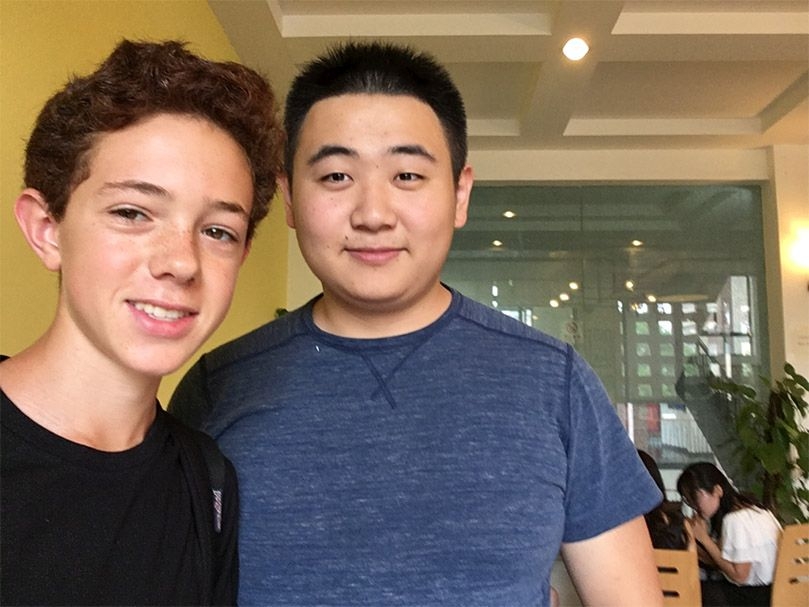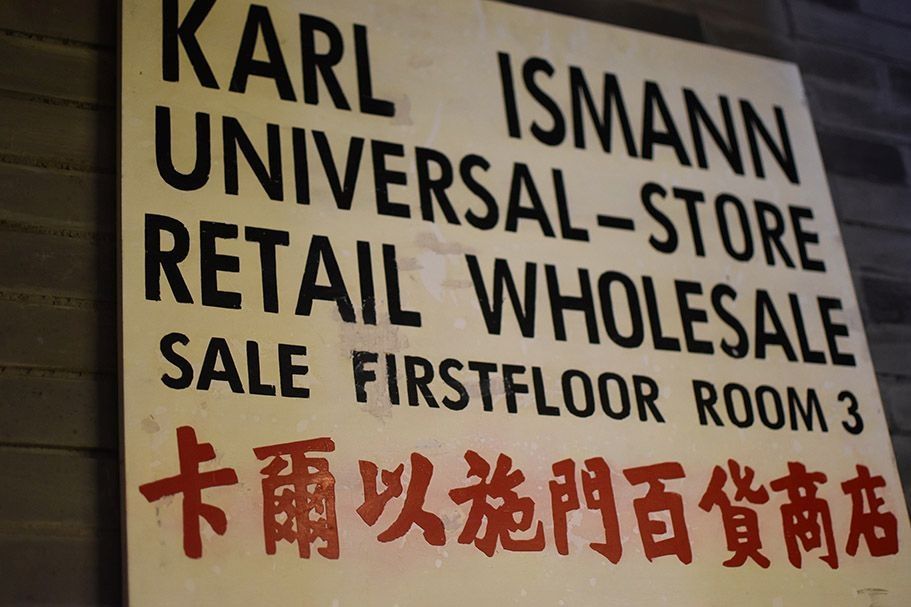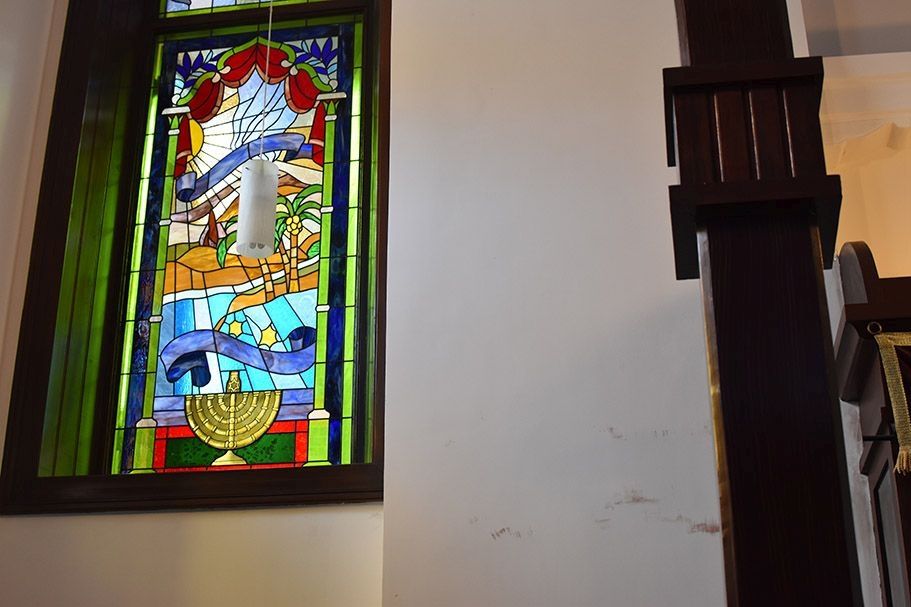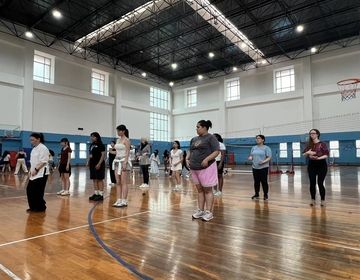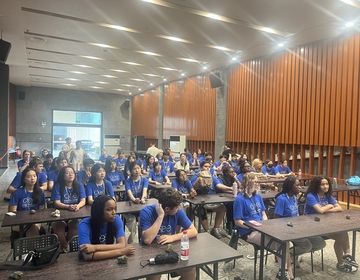Jewish Refugee Museum
Today was yet another fun and sweaty day in Shanghai. It began with an alarm set for eight o’clock, and by half past eight me and my roommate Benjamin were out of the house, stomachs filled with steamed buns, fried eggs, and unfortunately, stinky tofu. During our language class, students performed skits in which customers ordered food at a restaurant, and discussed differences between Western and Chinese dining. We also learned about various leisure activities, from 养花, growing flowers, to 跳广场舞, square dancing.
After our into the community activity, in which we interviewed locals about their favorite activities and how they deal with their stresses, my friends and I headed out to lunch. Today, we decided to go to the student cafeteria on campus, which serves cheap and delicious food. Today, I tried fried shrimp with rice. Although it wasn’t as exciting as the bullfrog I had tried earlier on in the session, it was very good. In addition, I tried milk tea with red beans, as opposed to bobas.
After lunch, students headed to the front gate, at which we waited for our bus to take us to the Jewish Refugee Museum. As we got on our bus, we were greeted with air conditioning, a pleasant change from the triple digit weather outdoors. On our way to the museum, we drove by the Bund, a scenic area in which Shanghai’s skyline can be viewed from the other side of the Huangpu River. When we reached our destination, we were split up into two groups, one which would take the tour in mandarin, and one in English. Being in the middle of three levels, I was allowed to choose which group I would go with. Although I wanted to practice my language skills, I chose the English tour, as I wanted to be able to fully understand the history of Jewish refugees in Shanghai. When our tour began, we entered the old synagogue, which had both English, Hebrew, and Chinese written in various places.
From there, our group entered the museum, in which we learned about the third wave of Jewish refugees to Shanghai, which occurred during the Holocaust. We heard various stories about how refugees dealt with such an abrupt change in lifestyle, and how many of the Chinese here in Shanghai lended helping hands to the Jewish people. Then, we saw a model of the tight conditions some twenty thousand Jews lived through in the Hongkou Ghetto. Next, our group viewed a memorial of the names of the Jews that came here to Shanghai to escape persecution. The museum was very interesting, as I had never heard about Jewish refugees coming to Shanghai. After taking a group picture of our tour group, we boarded the bus and headed back.
After we arrived back at campus, my friends and I wanted to try some street food. We ate hot steamed buns, and the one I ordered was filled with red bean paste, which was quite tasty, and only 2元, which is about the value of an American quarter. By the end of the day, I had eaten red beans in three different ways, learned about Shanghai’s history, and improved my language skills. Today was a great example of one of the many adventures I’ve had here in Shanghai, and I can’t wait to experience more new things!
(Written by Eli Masket)
Related Posts
Exploring China Through Food, Dance, and Art!
Students were busy this week exploring China and Chinese culture from multiple aspects. Up first, they hosted a Chinese Cuisine Collaboration were everyone prepared a Chinese dish with their host... keep reading
Wu Xi Trip
Wuxi is a city in southern Jiangsu province, eastern China. As of the 2020 census, the city had a total population of 7,462,135 inhabitants. Wuxi borders Suzhou City to the... keep reading
Shanghai's Old City
Located in the heart of Shanghai's Old City, Yu Garden (豫园) is a historic site that offers a glimpse into the Ming Dynasty with its classical Chinese architecture, ponds, and... keep reading
